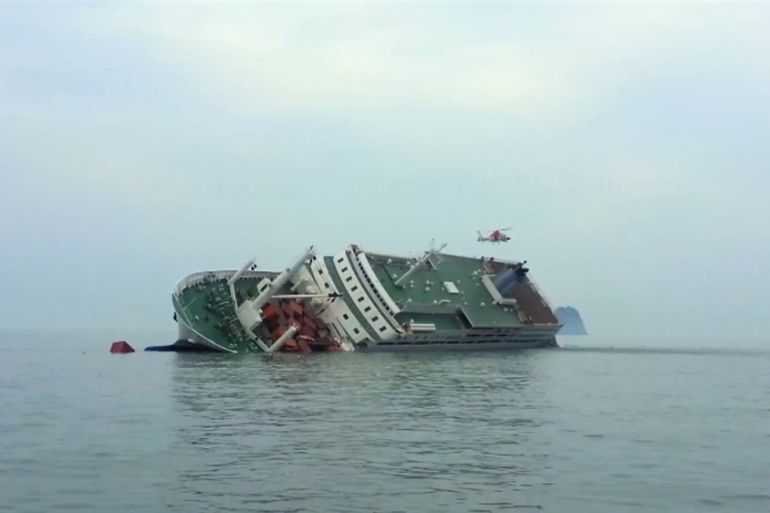
In the Absence: South Korea’s Sewol Ferry Disaster
An unflinching look at South Korea’s Sewol ferry disaster as it unfolds and its ramifications on a nation.
Editor’s note: This film is no longer available to view online.
A disaster began to quietly unfold at 8:49am on April 16, 2014.
Keep reading
list of 4 itemsControversial law sparks fist fight in Georgian parliament
‘Prejudice, Islamophobia’: Free speech fears as UK redefines extremism
Dominican FM on Haiti gang violence crisis: Spillover threat?
The Sewol ferry, bound for Jeju Island in South Korea, began to sink. On board were 476 passengers, including 325 students on a school trip. Mobile phone footage records students struggling to stay on their feet in their cabins, the atmosphere calm but uncertain.
Dashcam footage showed cars sliding across the car deck as the ship tipped.
A passenger had made an emergency call at 8:52am, and through radio communications the authorities were notified. The ferry continued to sink.
A single patrol boat arrived and the captain escaped the ship at 9:47am. No one had called for the passengers to evacuate.
Over the coming hours, the rescue operation never intensified – not when passengers wearing life jackets began to jump ship, not when the ferry tipped entirely on its side, and not when it sank so that only its prow remained above water.
More than 300 people, mostly school children, had lost their lives.
In the aftermath, a group of civilian divers came to assist the coastguard’s rescue efforts. For months they retrieved the bodies and belongings of victims. Public protests – and calls for justice from the victims’ families – would also help drive the removal of President Park Geun-hye in 2017.
Using phone and dashcam footage, recordings of radio communications, and the accounts of survivors, civilian rescuers, and families of the deceased, In the Absence follows the Sewol ferry disaster in meticulous detail, offering an unflinching look at one of South Korea’s great tragedies, and the layers of dysfunction and neglect that led to it.
FILMMAKER’S VIEW
By Seung-jun Yi
April 16, 2014. The day has become one of the most painful days in the modern history of Korea to most of the Korean people. They watched the sinking of MV Sewol ferry, live on TV, and 304 passengers and crew members including 250 high school students on their school trip were killed. It was painful and traumatic, not just because of the number of the victims, but because of the fact that they could have been saved.
Five years have already passed since the disaster, but I can still witness the pains of the victims’ families, civilian divers and many more people that had been affected by the tragedy.
After a long investigation, it has turned out that the tragedy was not just an unfortunate accident but was a systemic failure from the social-political frailty of Korean society.
Even though it was a clear failure of the rescue operation, no one has been punished except the captain of the coastguard boat.
History teaches us that tragedies repeat if we easily forget about them. The victims’ families ask us to “Remember 16 April”. It’s not only a call to support their demand for a proper investigation, but it is also from their wish not to witness such a tragedy again in any society.
Human beings are vulnerable to “time”. As time goes on, we forget many things. Time makes us dull. It is like a black hole that absorbs our thinking and feeling.
We need to be awakened about this world, the system and order which are controlling this world. I want people to remember the day, remember what happened on that day. And I hope people do not forget that if a system fails to operate correctly, it can result in terrible pain and trauma to innocent citizens in the end. The pain which might not be curable. This film is my plea for people to wake up and keep your eyes on the systems.